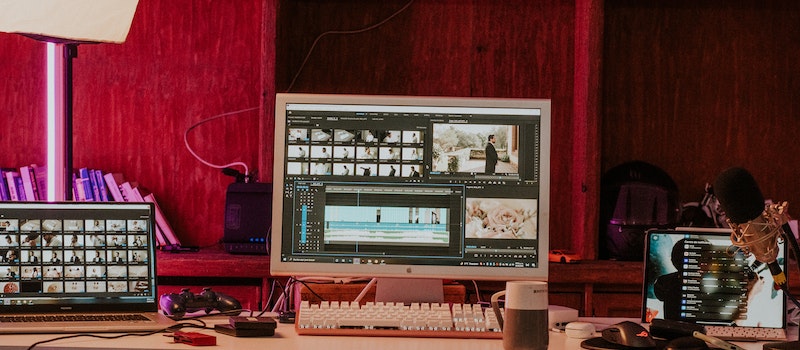In today’s digital landscape, blogging has become a powerful medium for expressing ideas, sharing knowledge, and building online communities. However, in a world where attention spans are dwindling, it’s crucial for bloggers to adapt and evolve their content strategies. This is where the integration of video comes into play. By incorporating video into your blog, you can take your content to new heights and captivate your audience in ways that written words alone cannot.
Imagine the impact of visually telling your story, demonstrating your expertise, or showcasing your products through the power of video. Video content has the ability to engage, entertain, and connect with viewers on a deeper level, fostering a stronger bond with your readers. It adds a dynamic and immersive element that can transform the way your blog is perceived and consumed.
In this blog post, we will explore the myriad benefits of leveraging video in your blog and delve into practical strategies to take your blog to the next level. Let’s dive in and unlock the potential of video for your blogging journey.
The Power of Visual Storytelling
Visual content has a profound impact on audience engagement, and when it comes to storytelling, the video takes it to a whole new level. The video has the ability to convey emotions, narratives, and messages in a way that written words alone cannot match. It combines visual elements, music, voiceovers, and motion to create a compelling and immersive experience for viewers.
By incorporating video into your blog, you can enhance storytelling and establish a deeper emotional connection with your audience. Whether it’s through cinematic visuals, heartfelt interviews, or behind-the-scenes glimpses, video enables you to bring your stories to life and leave a lasting impression on your readers.
To see the power of video in action, take inspiration from successful blogs that have effectively integrated video. From travel bloggers capturing breathtaking landscapes to food bloggers showcasing mouthwatering recipes, these examples demonstrate how video can elevate the impact and engagement of your blog content.
Types of Video Content for Blogs
When it comes to integrating video into your blog, there are various types of video content you can explore. Each type serves a unique purpose and offers distinct benefits for engaging your audience.
Tutorials, interviews, product reviews, and demonstrations are just a few examples of videos that work well for blog integration. Tutorials help your readers learn new skills or master specific tasks, while interviews provide valuable insights and perspectives from industry experts. Product reviews give your audience an in-depth look at products or services, aiding them in making informed decisions.
Understanding the benefits and purposes of each type of video content is crucial. Tutorials build credibility and establish you as an authority in your niche. Interviews foster connections with influencers and thought leaders. Product reviews help your audience make purchasing decisions with confidence.
To create compelling video content that resonates with your blog’s niche or target audience, consider their preferences, pain points, and interests. Tailor your videos to provide value, solve problems, or entertain your viewers. By aligning your video content with your blog’s focus, you can strengthen your brand and engage your readers on a deeper level.
Integrating Video into Blog Posts
Integrating videos into your blog posts can enhance engagement and provide a richer experience for your readers. There are several ways to incorporate videos seamlessly within your blog.
You can embed videos directly into your blog posts, allowing readers to watch them without leaving the page. Another option is to include clickable links that open the videos in a new tab or window. Video galleries are also popular, especially when you have multiple videos to showcase.
Each method has its pros and cons. Embedding videos keeps readers on your blog, increasing dwell time and reducing distractions. Linking to videos provides flexibility and allows readers to control when and where they watch them. Video galleries can showcase a collection of videos in an organized and visually appealing manner.
To optimize video placement, consider the flow of your blog post and strategically position videos where they enhance the narrative or support your content. Ensure that videos load quickly and are mobile-friendly to provide a seamless user experience across devices.
Video Production Basics
Creating high-quality videos doesn’t have to be complicated or expensive. With the advent of free online video makers and readily available tools, anyone can produce professional-looking videos without breaking the bank. Here’s an overview of the essential equipment and tips for filming and editing videos like a pro.
To start, you’ll need a camera, microphone, and video editing software. Nowadays, smartphones often have excellent built-in cameras, and external microphones can enhance audio quality. As for video editing, there are numerous free online video makers that offer user-friendly interfaces and powerful editing capabilities.
When filming, pay attention to lighting, sound, and composition. Natural lighting or affordable lighting kits can greatly improve the visual quality of your videos. Good audio is equally important, so consider using an external microphone or recording in a quiet environment. Additionally, follow the rule of thirds and experiment with angles and perspectives to compose visually appealing shots.
Once you have your footage, explore video editing techniques using the best free online video maker. Trim, arrange, and enhance your clips, and add transitions, text, and music to create a polished final product. Many video editing tools and tutorials are available online, making it easier for beginners to dive into video editing.
Promoting Video Content
Start by promoting your video content within your blog. Embed videos prominently within relevant blog posts to capture the attention of readers. Encourage social sharing by adding social media sharing buttons alongside your videos.
Harness the power of social media platforms to increase video visibility. Share your videos on platforms like YouTube, Facebook, Instagram, and Twitter, using engaging captions, hashtags, and eye-catching thumbnails. Leverage the targeting options provided by these platforms to reach your desired audience.
Optimize your video content for search engines by using relevant keywords in titles, descriptions, and tags. This will improve your video’s visibility on search engine results pages. Additionally, cross-promote your videos by including links to them in your blog posts or featuring them in your email newsletters.
Drive traffic to your blog by leveraging video promotion. Include links to related blog posts or a call-to-action in your video descriptions, encouraging viewers to visit your blog for more information. Engage with your audience by responding to comments and encouraging discussions, creating a sense of community around your video content.
Measuring Success: Analytics and Metrics
Tracking the performance of your video content is crucial for understanding its impact and making data-driven decisions. By analyzing key metrics, you can gain valuable insights and continually improve your video content strategy. Here’s why analytics and metrics matter and which ones to focus on.
Measuring video performance allows you to gauge its reach, engagement, and effectiveness. Views indicate the number of times your video has been watched, while engagement metrics, such as likes, comments, and shares, reflect how viewers interact with your content. Conversion rates reveal the extent to which your video drives desired actions, such as website visits, subscriptions, or purchases.
To analyze video data effectively, leverage the analytics tools provided by platforms like YouTube or social media channels. Pay attention to audience demographics, watch time, click-through rates, and playback locations. Identify patterns, trends, and areas for improvement.
Use the insights gained from video analytics to optimize your future video content. Identify topics and formats that resonate with your audience. Experiment with different styles, lengths, or calls to action to improve engagement and conversions. Continually refine your video content strategy based on the data you collect.
Conclusion
Video breathes life into your storytelling, captivating viewers on a deeper emotional level. It enhances your blog’s visual appeal, boosts audience engagement, and expands your reach. By leveraging video, you can showcase your expertise, entertain your readers, and establish a memorable brand presence.
Now is the time to take action and experiment with video integration in your own blog. Dive into the world of video creation, explore different types of content, and embrace the power of visual storytelling. Utilize the tips, strategies, and resources shared throughout this blog to get started.










